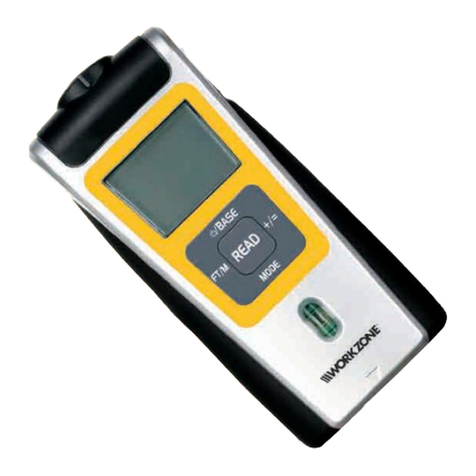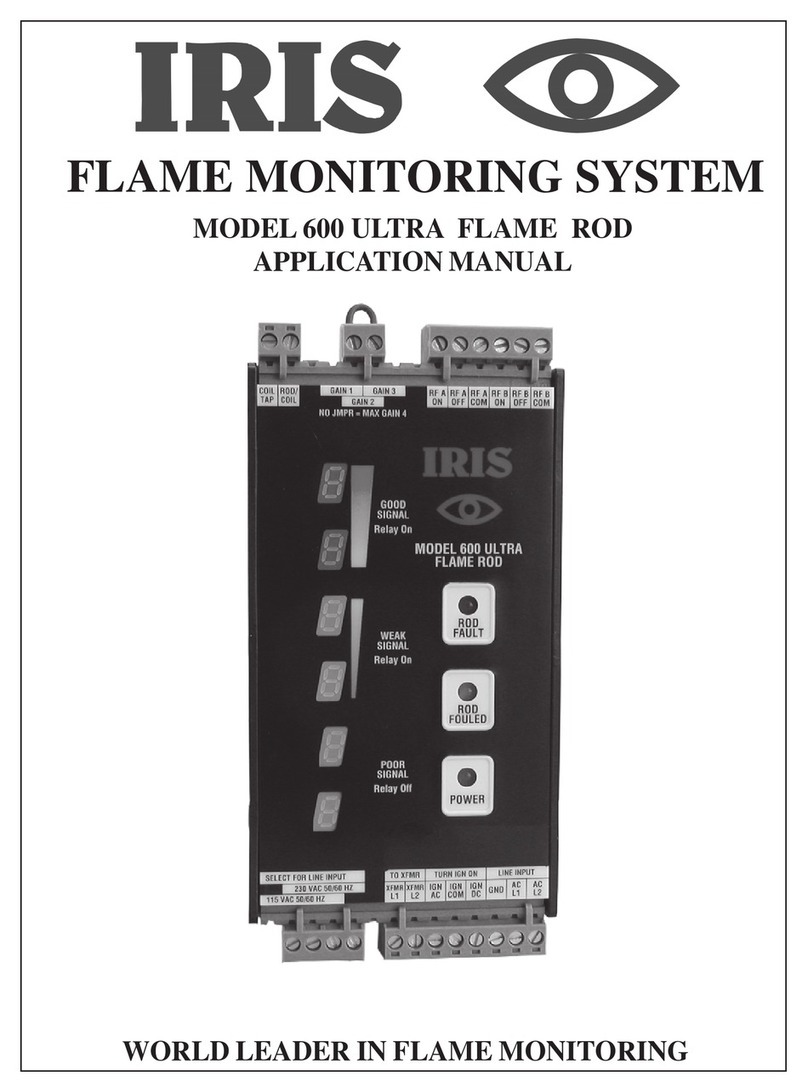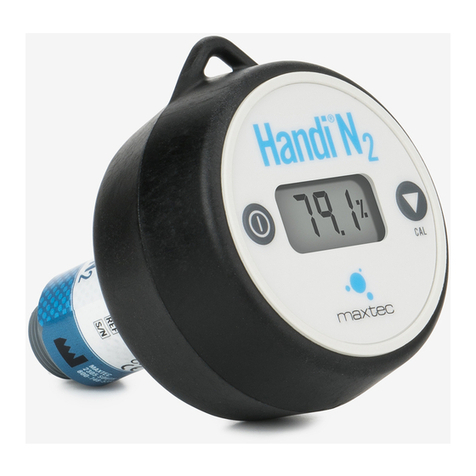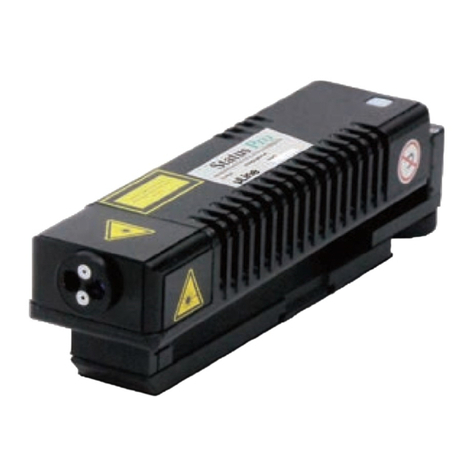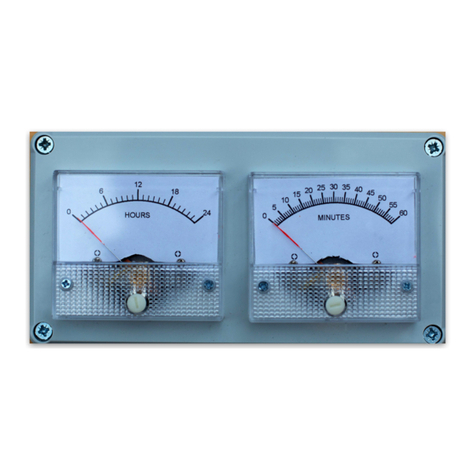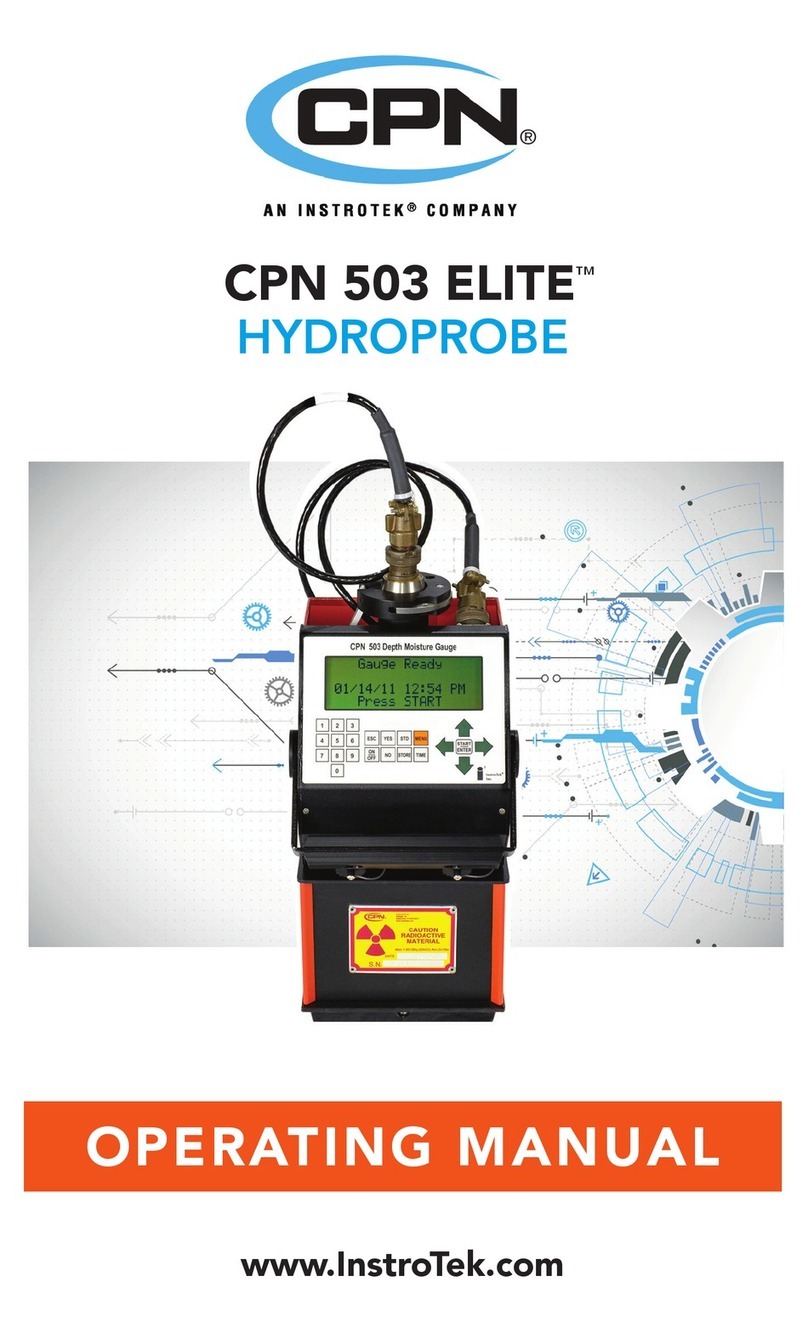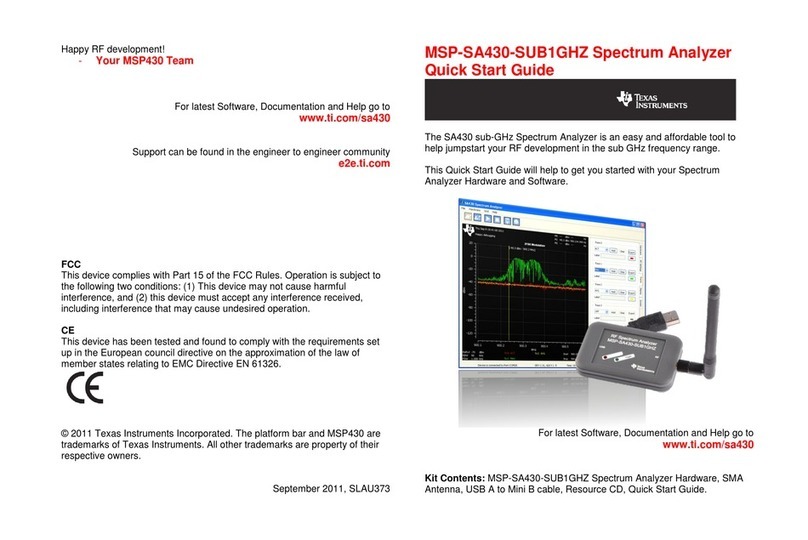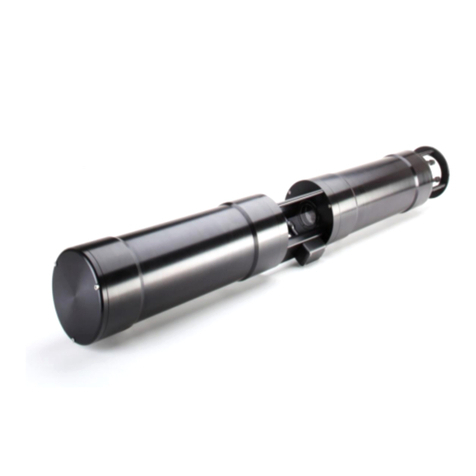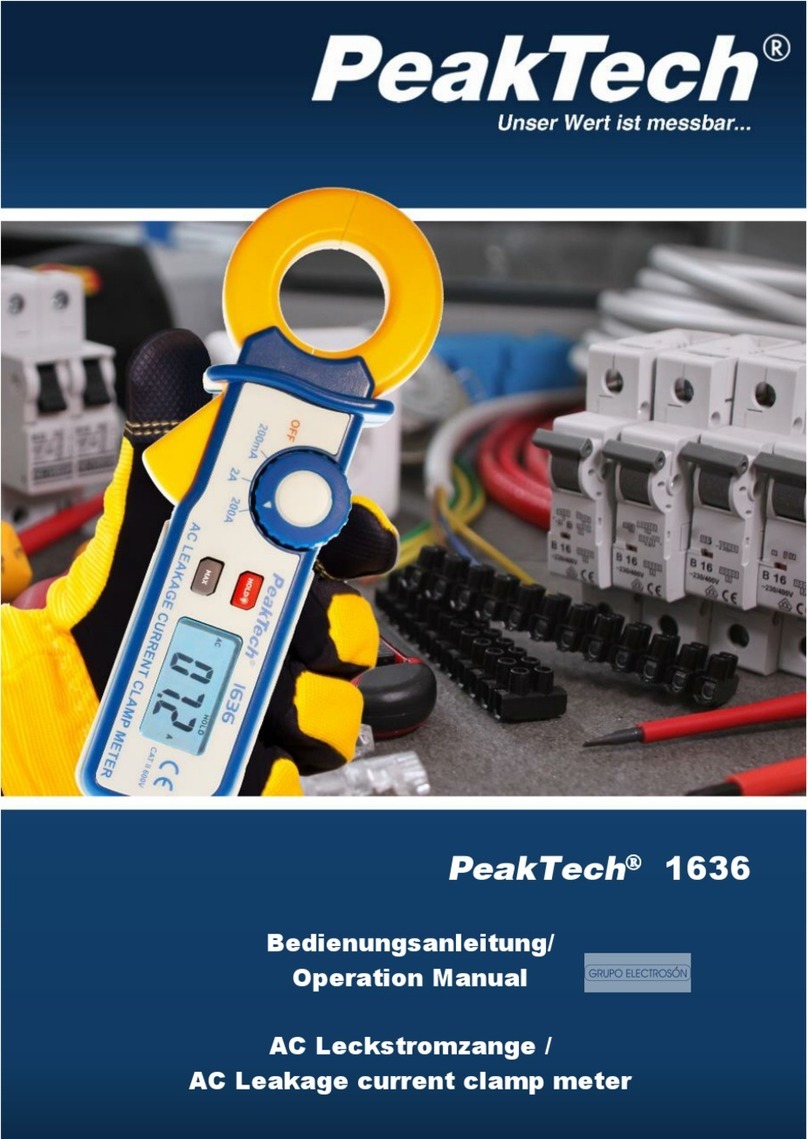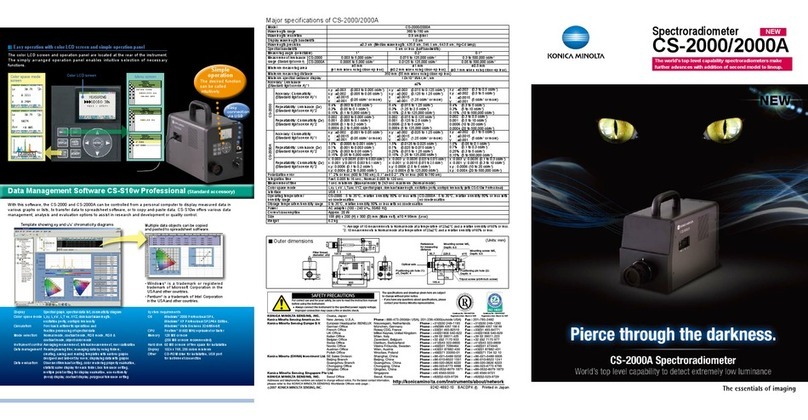CharlesWater Meg 99035 Service manual

TECHNICAL BULLETIN
Unit 17. Millbrook Business Park, Sybron Way • Crowborough, East Sussex TN6 3JZ United Kingdom
Phone: 00 44 (0) 1892-665313, Fax: 00 44 (0) 1892-668838 • E-mail: info@charleswater.co.uk, Internet: www.charleswater.co.uk
PPE-5046.E 6/01 Page 1 of 3
:Meg™ Pocket Megohmmeter
Operation and Maintenance
Figure 1. 99035
:
Meg Pocket
Megohmmeter
Description
The Charleswater Europe :Meg Pocket
Megohmmeter is a portable test
instrument designed for measuring both
surface resistivity and surface-to-ground
resistance of static dissipative and
conductive materials. Seven colour-
coded LEDs, reading from right to left,
easily identify static dissipative and
conductive ranges. The :Meg will test
materials with surface resistivity of 105-
1010 Ohms/sq. This test instrument is
ideally suited for Quality Control and
Field Service personnel as well as for
use in your regular auditing of your ESD
protective materials. The :Meg features
simple one-button operation and a 9V
battery for constant use and maximum
portability. This state-of-the-art, auto-
ranging instrument provides top
performance, yet weighs only 170
grams. The high-impact plastic case
ensures durability despite the meter’s
light weight.
The :Meg has not been designed to
meet BS IEC 61340-5 test equipment
requirements and therefore
measurements obtained with this device
may not agree with measurements
taken according to the BS IEC 61340-5
test procedure. This test instrument is
intended for use only as an auxiliary
tool for monitoring surface resistivity. If
you are interested in obtaining a meter
which does meet all the test equipment
requirements of BS IEC 61340-5, we
recommend our model 99100 Surface
Resistance Test Kit. For more
information on this product ask for
techical bulletin PPE-5033.E.
Installation
Remove the meter from the carton and
inspect for damage. Each unit should
be fully charged and includes:
1 :Meg Pocket Megohm meter
1 Surface-to-Ground, cord assembly
1 PPE-5046.E technical bulletin
1 Installed 9V battery
Properly store the meter and its
component assemblies when not in
use.
Operation
The :Meg will perform Surface
resistivity and Surface-to-Ground
resistance measurements. Work
surfaces and materials to be tested
should be cleaned prior to testing to
ensure that surface dirt and
contamination do not affect results. It is
recommended that non-silicone based
cleaners such as Charleswater
Europe’s ‘REZTORE’ Surface and Mat
Cleaner be used for regular cleaning of
ESD protective work surfaces. When
non-ESD surfaces are being used,
‘Reztore’ Topical Antistat is
recommended for eliminating static
charge generation.
Figure 2. Cleaning the work surface
before testing.
Surface resistivity and Surface-to-
Ground resistance readings are
indicated by the series of LEDs on the
face of the meter. The LEDs are read
from right to left as follows:
1. Red >1010 Ohms, Meter is on
and battery is functioning
2. Red Less than 1x1010 Ohms
3. Green Less than 1 x 109 Ohms
4. Green Less than 1 x 108 Ohms
5. Green Less than 1 x 107 Ohms
6. Yellow Less than 1 x 106 Ohms
7. Yellow Less than 1 x 105 Ohms
Each LED indicates one order of
magnitude of resistance. If the test
surface is conductive to less than 105
Ohms, all the LEDs will be lit. If it is
neither conductive nor static dissipative,
only the red “On” LED will be lit.
Surface Resistivity
Measurements (Rp)
Surface resistivity measurements are
made using only the meter without the
cord assembly. When the white button
is depressed a test voltage of 9 VDC is
applied to the meter’s center electrode.
The second resistivity electrode will
supply the resistance bridge and
provide the measurement. To perform
surface resistivity tests, follow these
simple instructions:
A. Check battery operation by
depressing the white button on the
center of the meter. The red “On” lamp
at the far right should light to indicate
that the unit is functioning properly.
B. Place the meter on the surface being
tested. All three electrodes should make
contact with the surface.
C. Press the white button. The surface
resistivity will be indicated by the
number of LEDs which light up. The
more lights illuminated, the greater the
conductivity of the surface.
Figure 3. Measuring surface resistivity.
WORK SURFACE

Unit 17. Millbrook Business Park, Sybron Way • Crowborough, East Sussex TN6 3JZ United Kingdom
Phone: 00 44 (0) 1892-665313, Fax: 00 44 (0) 1892-668838 • E-mail: info@charleswater.co.uk, Internet: www.charleswater.co.uk
PPE-5046.E Page 2 of 3
Surface-to-Ground
Measurements (Rg)
The Surface-to-Ground feature is best
used when expected results are less
than 106ohms, and when residual
voltages can be removed from the test
surface. Residual voltages may cause
the two upper range LEDs to light,
resulting in a false reading.
When the Surface-to-Ground cord is
plugged in, voltage is diverted from the
center electrode to the cord in order to
measure resistance. When making
Surface-to-Ground tests, follow these
procedures:
A. Check battery operation by
depressing the white button. The red
“On” lamp will indicate that the unit is
functioning properly.
B. Plug the Surface-to-Ground cord into
the left side of the meter.
Figure 4. Installing Surface-to-Ground
cord assembly.
C. Place the µMeg on the test surface.
D. Connect the test cord to the ground-
point for the surface.
E. Press the white button. The LEDs will
indicate the test results.
Figure 5. Measuring Surface-to-Ground
resistance.
F. Unplug the cord when testing is
finished.
Battery Operation
Battery function is automatically
checked by the unit when the meter is
turned on. If the battery voltage drops
below 8 VDC, the red LED on the far
right of the meter will not light, indicating
a “low battery” condition. Replace
battery with a new 9V alkaline battery.
Maintenance
Your :Meg will require very little
maintenance, and there are few user-
serviceable parts. If your meter requires
service beyond the simple procedures
described below, please contact the
factory.
Electrode Cleaning
To assure accurate measurements, the
electrodes should be kept as clean as
possible. A thorough cleaning at least
every 3 months is recommended. The
following is the recommended cleaning
procedure:
1. Carefully remove the electrodes from
their snap-jacks using a screw driver or
other blunt flat bladed object. Avoid
scratching or bending electrodes.
Figure 6. Cleaning the electrodes.
2. Clean both the snap stud and the
electrodes with a cotton swab soaked in
isopropyl alcohol. Check the rubber
centers for wear - the rubber should
form a convex spot on the bottom of the
electrode. If the rubber is worn, replace
electrodes. Otherwise snap the clean
electrodes back onto the meter.
Electrode Replacement
Charleswater Europe offers an
electrode replacement kit for the :Meg
(call customer service for information).
Included with each kit are 3 gold plated
electrodes and 3 conductive rubber
electrodes. Replacement electrodes
must be installed correctly to ensure
proper operation. Follow these
instructions carefully:
A. Remove the old electrodes by
placing a screwdriver under the lip of
the gold cap and prying up to remove.
B. Remove the conductive rubber piece
from inside the snap stud.
C. Clean the new electrode assemblies
with isopropyl alcohol.
D. Insert a new conductive rubber
electrode into a new snap socket, with
the widest end down. Be sure the
rubber is pressed in all the way.
E. Carefully trim the rubber electrode
leaving 3.2mm exposed above the
socket.
F. Remove the rubber electrode and
invert it (wide end up).
G. Snap on a new gold electrode
socket over the rubber electrode.
H. The rubber electrode should be
protruding slightly through the hole in
the socket. If not, give the socket a
slight twist until the rubber is exposed.
Figure 7. Replacing the electrodes.
Once you have replaced the electrodes,
you may wish to make a quick
calibration check (see Calibration
Section) to assure that the electrodes
are operative.
Theory of Operation
The :Meg measures resistivity by
setting up a bridge between two
precision 1% resistors of known value
and the surface tested, of unknown
value. When the white button is
depressed a test voltage of 9 VDC is
applied to the meter’s centre electrode
or ground cord, depending on the test
being performed. One of the bottom
electrodes on the outside of the meter
supplies the resistance bridge. The test
voltage resulting from the bridge is
compared to reference voltages
established by six trimming
potentiometers. Two integrated circuits
are configured as comparators to check
the voltage from the bridge against the
potentiometers. Based on the setting of
each potentiometer, the appropriate
LED is lit.
GROUND
POINT
SNAP SOCKET
CONDUCTIVE RUBBER
SNAP STUD
NEW ELECTRODE
SOCKET
NEW RUBBER
CONDUCTIVE

Unit 17. Millbrook Business Park, Sybron Way • Crowborough, East Sussex TN6 3JZ United Kingdom
Phone: 00 44 (0) 1892-665313, Fax: 00 44 (0) 1892-668838 • E-mail: info@charleswater.co.uk, Internet: www.charleswater.co.uk
PPE-5046.E Page 3 of 3
Charleswater Europe Ltd.
Specifications
Sensitivity Range
Surface Resistivity:
Less than 1010 ohms
Surface-to-Ground:
Less than 109ohms
LED Key (from right to left)
1. Red:
>1010 Ohms, Meter On,
and Battery OK
2. Green:
<1010 Ohms Static Dissipative
3. Green:
<109Ohms Static Dissipative
4. Green:
<108Ohms Static Dissipative
5. Green:
<107Ohms Static Dissipative
6. Yellow:
<106 Ohms
7. Yellow:
>105Ohms Conductive
Test Sample Size
7.5cm x 4cm or larger
General Characteristics
Power Supply
9 volt alkaline battery (included)
Test Voltage
Nominal 9 volts
Electrodes
Steel and conductive rubber
Temperature Range
Operating 10°C to 40°C
Storage -15°C to +60°C
Relative Humidity
0% to 99% (non condensing)
Operation
Resistance bridge
Readout
Seven LEDs
Resolution
One order of magnitude
Accuracy
±10% all, except ±20%
109 Ohms, 1010 Ohms
Repeatability
±3%
Weight
170 grams
Dimensions
10cm x 6cm x 4.5cm
Calibration
Any :Meg may be returned to the
factory for calibration. Contact our
Customer Service Department at 00 44
(0) 1892-665313 for a Return Material
Authorization. Written Purchase Orders
are required for calibration services.
A check on the function of the :Meg
can be performed with the following
procedure. You will need 1% resistors of
the following values: 100K, 1M, 10M,
100M, 1G and 10G ohms. These
precision resistors will be placed across
the two electrodes on the bottom of the
meter (see Figure 8).
A. Place the :Meg on an insulator (e.g.
Teflon or glass) and press the white test
button. Only the first red LED on the
right, marked “On” should be
illuminated. If this LED fails to light, the
battery should be replaced before
proceeding.
B. Place the 10G ohm resistor across
the middle electrode and the side
electrode as illustrated in
Figure 8. Press the test button. The
second LED should light. Be sure not to
contact the leads or the buttons as your
body’s resistance will affect the
readings.
Figure 8. Calibration of the
:
Meg
C. Continue this process with each
consecutive resistor, checking to make
sure the appropriate LEDs are
illuminated. If all resistors check
properly, the unit’s calibration is verified.
Adjustment
Unauthorized servicing or modifications
to the :Meg will void the product
warranty. Servicing should only be
performed by the factory. See warranty
section for repair charges.
RESISTOR
ELECTRODE
Limited Warranty
Charleswater Europe expressly
warrants that for a period of one (1)
year from the date of purchase,
Charleswater Europe :Megs will be
free of defects in material (parts) and
workmanship (labour). Within the
warranty period, a unit will be tested,
repaired or replaced at Charleswater
Europe’s option, free of charge. Call
Customer Service at 00 44 (0) 1892-
665313 for a Return Material
Authorization, and for proper shipping
instructions and address. Any unit
under warranty should be shipped
prepaid to the Charleswater Europe
factory. Include a copy of your original
packing slip, invoice, or other proof of
date of purchase. Warranty
replacements will take approximately
two weeks.
If your unit is out of warranty,
Charleswater Europe will quote repair
charges necessary to bring your unit
up to factory standards. Call
Customer Service at 00 44 (0) 1892-
665313 for proper shipping
instructions and address. Units
should be shipped prepaid.
Warranty Exclusions
THE FOREGOING EXPRESS
WARRANTY IS MADE IN LIEU OF
ALL OTHER PRODUCT
WARRANTIES, EXPRESSED AND
IMPLIED, INCLUDING MERCHANT-
ABILITY AND FITNESS FOR A
PARTICULAR PURPOSE WHICH
ARE SPECIFICALLY DISCLAIMED.
The express warranty will not apply to
defects or damage due to accidents,
neglect, misuse, alterations, operator
error, or failure to properly maintain,
clean or repair products.
Limit of Liability
In no event will Charleswater Europe
or any seller be responsible or liable
for any injury, loss or damage, direct
or consequential, arising out of the
use of or the inability to use the
product. Before using, users shall
determine the suitability of the product
for their intended use, and users
assume all risk and liability
whatsoever in connection therewith.
Other CharlesWater Measuring Instrument manuals


